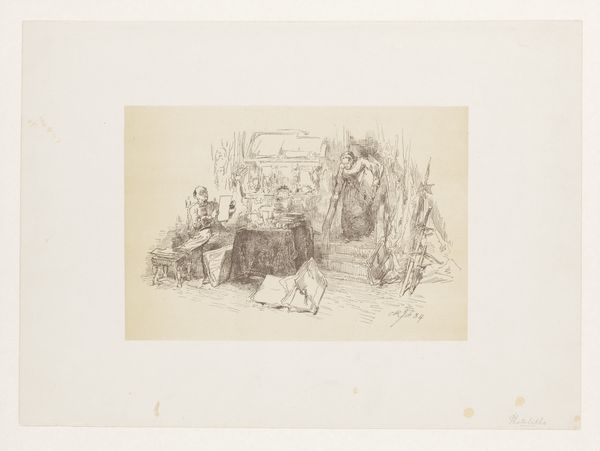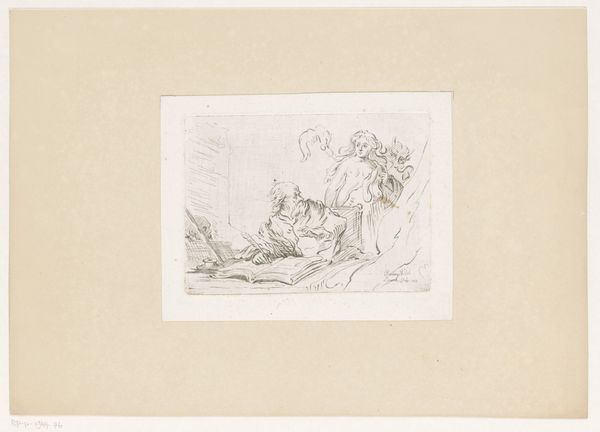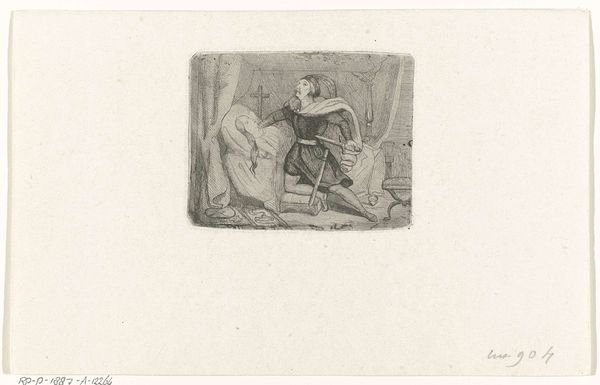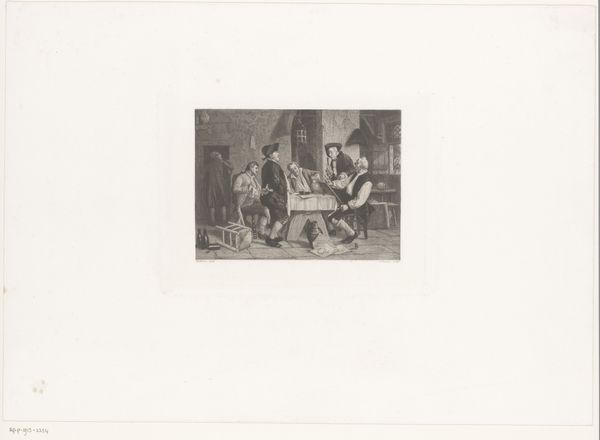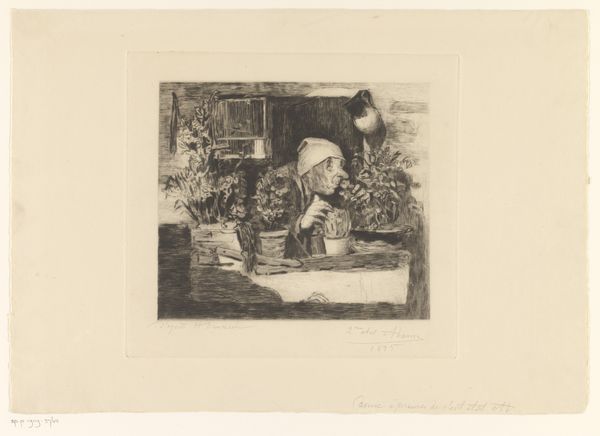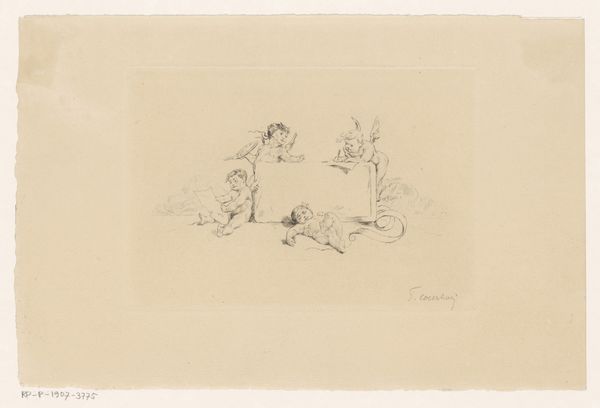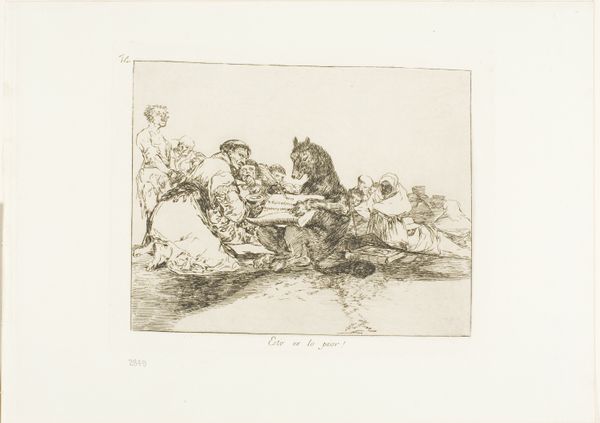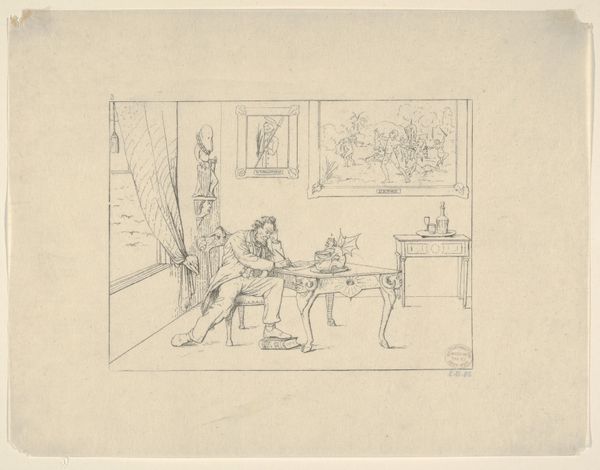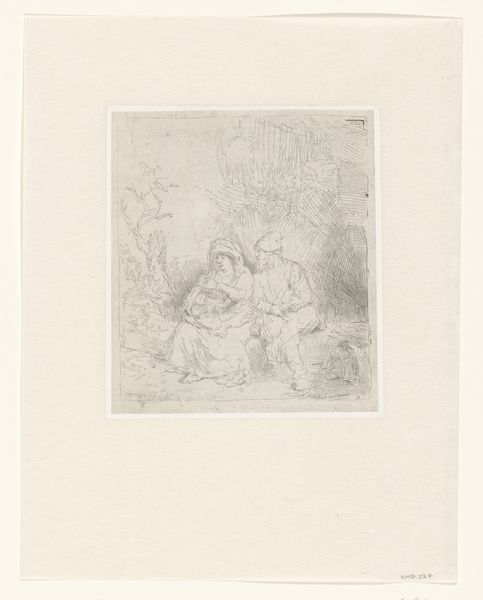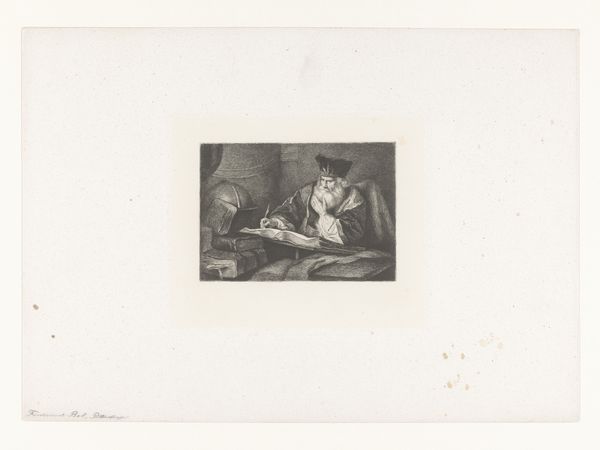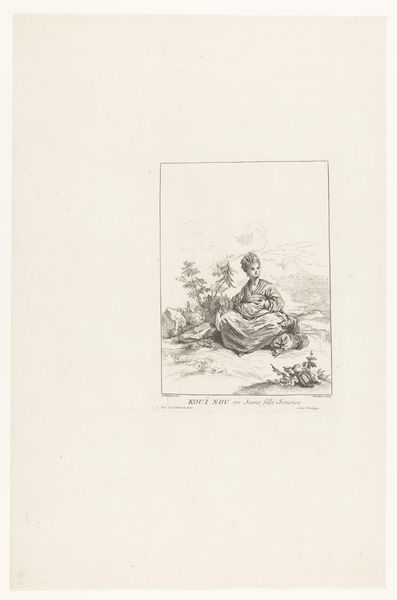
#
amateur sketch
#
light pencil work
#
thin stroke sketch
#
shading to add clarity
#
pencil sketch
#
incomplete sketchy
#
ink drawing experimentation
#
pen-ink sketch
#
pencil work
#
initial sketch
Dimensions: height 84 mm, width 107 mm
Copyright: Rijks Museum: Open Domain
Curator: This delightful pencil sketch, "Painter and Lover in the Studio," created around 1830 by Eugène Verboeckhoven, presents a scene rich with implications. Editor: The delicacy of the drawing lends a certain intimacy. It feels like a stolen glimpse into a private world, the thin lines almost like whispers. Curator: Indeed, and whispers can reveal so much! Look at the carefully arranged objects: the skulls, the drapery, the antique figures. They are staging a symbolic play of love, death, and art's imitation of life. This harkens back to the traditional visual language found within Dutch Golden Age Vanitas paintings and emblems. Editor: Precisely! But let’s not forget the power dynamics subtly present. The male painter seemingly takes center stage, but the lover and perhaps muse occupies an equal plane, thereby disrupting societal expectations of that period. It reflects emerging, yet still restricted, concepts of gender roles within the context of the bourgeois household during this particular historical moment. Curator: Intriguing interpretation. However, I'm not quite sure of Verboeckhoven´s own subversive take. The iconography suggests perhaps the opposite, namely continuity: artist, muse, and mortality, bound within a tradition. We also see these archetypes endlessly revisited in art, and their continuing resonance as timeless motifs that represent complex emotions around creation. Editor: But that continuity is precisely the point of contention, isn't it? What traditions are upheld, which ones are challenged? The drawing itself is light and almost unfinished, pointing to the constant reformulation involved in creation. Is the artist really in charge, or merely documenting life that's moving too quickly to completely comprehend it? Curator: Perhaps we're both right. After all, artistic depictions exist in relation with tradition and, concurrently, reflect societal change. Here, we find symbols reinterpreted through the specific lens of individual interpretation, echoing historical motifs while also potentially challenging some conventions. Editor: Yes. In its intimate rawness, Verboeckhoven's sketch encourages us to question the permanence of the very narratives we impose upon art. The sketch presents a space of uncertainty. Curator: Precisely! That it still manages to spur such considerations across centuries says a great deal about art and how these visual languages persist and transform.
Comments
No comments
Be the first to comment and join the conversation on the ultimate creative platform.
